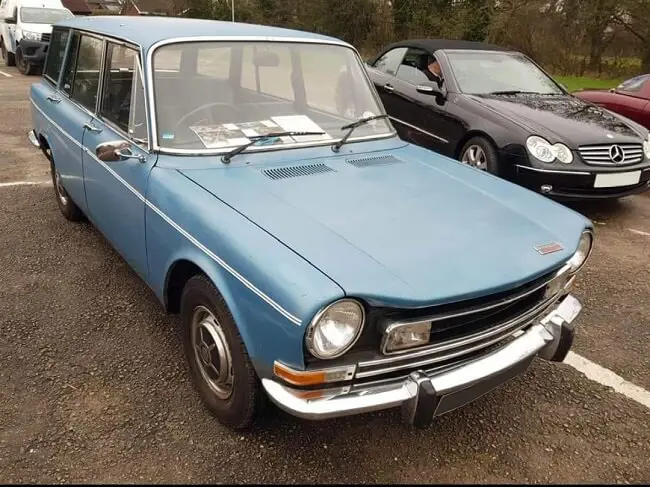MEET THE OWNER – MEL NEALE AND HIS SIMCA 1501 ESTATE
19 August 2024
I've had the Simca for five or six years. My father had a saloon in the 1970s, so I got to the stage when I was in a position to purchase one – albeit an estate version. When I bought it, I didn't register how rare the 1501s were. I purchased the Estate via eBay from a guy in Norfolk who had bought it off a farmer a month previously. It had sat in a barn for 29 years after the father passed away. The farmer renewed the brake lines and brakes, put a servo on, and put on new tyres.

It is always a pleasure to see a classic car in daily use, especially if it is now one of the rarest vehicles on the road. There are now believed to be only 11 of the 1501s on the road in the UK – https://www.howmanyleft.co.uk/?q=simca+1501 – and Mel's 1972 Estate is a reminder of a distant time when BBC2 screened The Goodies, and Simca was a familiar imported marque. Chrysler took a majority share in the French concern Société Industrielle de Mécanique et Carrosserie Automobile in 1963, when they unveiled the original 1300/1500.
Three years later, Simca facelifted the range as the 1301/1501 with a larger boot, a longer bonnet and a modified fascia. Nineteen sixty-eight marked the launch of the 1501 Special, with a twin-choke Weber carburettor, quartz-iodine auxiliary lamps and even a wooden-rimmed "sports" steering wheel. Autocar wrote of the estate version: “As long as there are family men (and women) who enjoyed sports-car motoring in their bachelor days, there will be a demand for a 'tweaked-up' and better-equipped station wagon.” In 1969, the Special gained a new black grille and integral fog lamps, which gave it a rather dynamic appearance: a Jean-Paul Belmondo of family cars.

Production ended in July 1975 when the Simca 1307/Chrysler Alpine replaced the 1501. Peugeot acquired Chrysler Europe in 1978; three years later, the Simca marque was no more. By the 1990s, they were scarce in the UK, partly due to their habit of corroding almost at will. Mel's adventures with his Simca commenced soon after he bought it, and in his words:
Stupidly, I attempted to drive the car back to Merseyside from Norfolk because the guy I bought it from said it had just been serviced! But 50 miles into the journey, it was an AA recovery trip home as the big ends went. On our drive, we renewed the shells, and I spent three hours on my back using wet and dry sandpaper to clean the crankshaft.
Mel also changed the heater's thermostatic valve, which is an extremely rare part. He reflects:
Parts can be difficult to obtain, but Dick Husband of the Simca Owners' Club has numerous spares and has been helpful. The paintwork is faded but original. There are the usual patched-up bits, but I use the 1501 daily – even on trips to the tip. People ask about the car wherever I go and think it must be worth a fortune because it is so rare. This is not the case as the Simca lives outside most of the year, although from October to May it is barn-stored. My problem is that I am not a mechanic, so finding people to work on it at a reasonable cost is a challenge, to say the least. Most parts, especially body panels, are unavailable, and while I would like a respray, I cannot afford it.
In its heyday, the 1501 Estate appealed to motorists who wanted a faintly more exotic transport than its Chrysler Europe in-house rival, the Hunter GL Estate. The Simca was more expensive than the Hillman – their 1972 prices were £1,367 and £1,256, respectively – but the brochure promised the “easy elegance you've always wanted”. Today Mel finds:
When you go to shows, only the real car nuts appreciate it. Most people gravitate to shiny cars that are never used. That is not my cup of tea, though. Most people don't recognise the brand, but a few people remember the Simca 1100 Van. She is good to drive – although she has the typical tappet rattle – the MPG is in the high 20s, and the Simca goes along at 50 mph with no problem—my limit, not the car's.
And, as you can see from this advertisement, the Simca can turn a suburban driver into the next Jackie Stewart:
Which thanks to: Mel Neale
